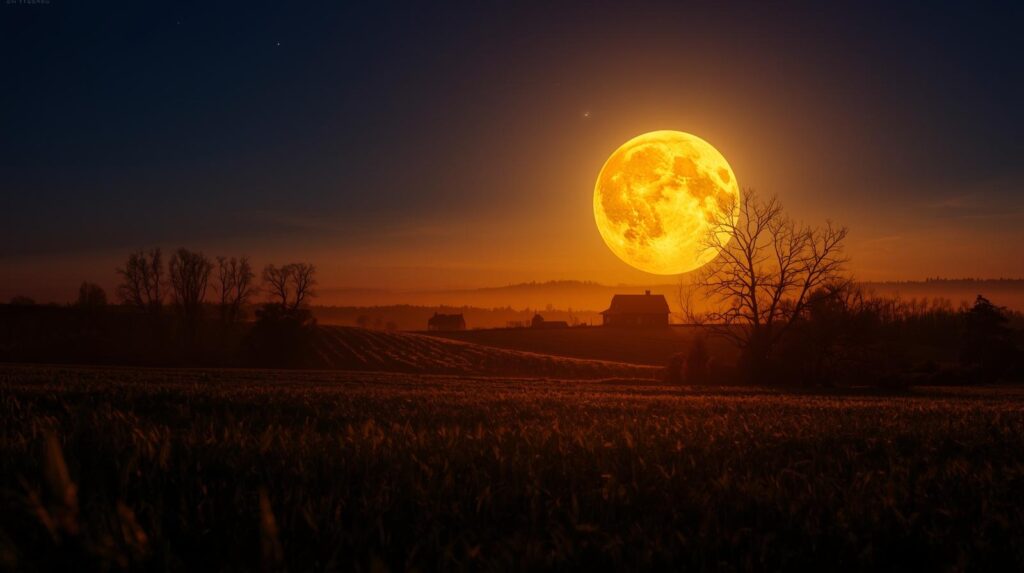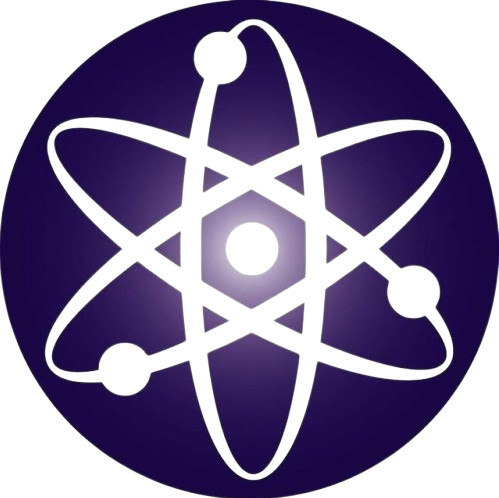“Last night, October 7, 2025, the Harvest supermoon rose as a jaw-dropping supermoon, casting a golden glow so close you could almost touch it—here’s why this cosmic showstopper had the world spellbound!” Wow, what a night! Picture this: you step outside, the air crisp with that unmistakable fall vibe—crunchy leaves underfoot, a faint whiff of woodsmoke in the breeze. You glance up, and bam—there’s this massive, glowing Harvest Moon, so bright and close it feels like you could just reach out and grab it. That was the scene last night, October 7, 2025, when the Harvest Moon lit up the sky as the first supermoon of the year. If you missed it, don’t sweat it—we’ve got the magic captured right here. Grab a cozy blanket, maybe a mug of hot cocoa, and let’s dive into why this Harvest Moon had everyone buzzing.
Why the Harvest Moon Hits Different
So, what’s the deal with the Harvest Moon? It’s not just any full moon—it’s the one closest to the autumn equinox (September 22 this year). Back in the day, before electricity, farmers counted on this moon’s bright light to keep harvesting crops late into the night. Imagine folks out in the fields, gathering corn or potatoes under this golden glow that stretched across the horizon. The moon rises almost due east, hugging the skyline, and it lingers longer than usual—sometimes giving an extra 50 minutes of light for a couple of nights. In 2025, this Harvest Moon wasn’t just practical; it was straight-up magical.
As it rose against a pink-and-amber sunset, the Earth’s atmosphere worked its magic, scattering light to make the moon look like a warm, glowing orb. My grandma used to call it the “Moon of Plenty,” saying it brought luck for the winter ahead. Whether you buy into that or not, there’s something about this moon that feels like a big, cosmic hug—a reminder that nature’s still running the show, no matter how many screens we’re glued to. And here’s the kicker: this wasn’t just any Harvest Moon—it was a supermoon, cranking the awe factor to eleven. Let’s break that down.
Supermoon Vibes: When the Moon Gets Cozy
Alright, let’s keep it simple with a sprinkle of science. A harvest supermoon happens when the full moon lines up with its closest point to Earth, called perigee. The moon’s orbit isn’t a perfect circle—it’s more like an oval—so it swings between about 221,500 miles (perigee) and 252,700 miles (apogee) from us. When it’s full and at perigee, it looks 14% bigger and 30% brighter than a regular full moon. Think of it like the moon decided to show up in its flashiest outfit.
This year, we’re spoiled with three supermoons in a row: October 7, November 5 (the Beaver Moon), and December 4 (the Cold Moon). But October’s stole the show as the first, sitting just 221,900 miles away last night, practically winking at us from the horizon. Fun fact: the term “supermoon” came from astrologer Richard Nolle in the ‘70s, but it’s legit science. It even gives tides a little extra push—coastal folks might’ve noticed some bigger waves. For the rest of us, it’s all about the view. No fancy gear needed—just your eyes, maybe a blanket, and a good spot to soak it in.
Why This Harvest Supermoon Felt Like Pure Magic
What made this one so special? Timing, for starters. Fall’s in full swing—leaves are turning fiery red and gold, Halloween’s around the corner, and this supermoon over a pumpkin patch? Total Instagram gold. Social media was popping off last night—#HarvestSupermoon2025 was everywhere, with folks sharing shots from city rooftops to desert canyons.
But it’s more than just pretty pictures. After a wild year (you’ve seen the headlines), this moon felt like a reset button. It’s the first supermoon since early 2024, and after a string of “meh” full moons, it’s like the universe said, “Hold up, here’s something to make you smile.” Astrologers are all about it, too, saying it’s a time to reflect, give thanks, or maybe just roast some marshmallows under its glow. Historically, this moon’s a big deal—Native American tribes called it the Hunter’s Moon for prepping for winter, while others saw it as the Drying Rice Moon. In Celtic stories, it’s tied to transformation. Even in movies, that spooky October moon vibe is iconic (think cozy mystery, not werewolf jump-scare).
A Quick Peek at the Science Behind the Glow
Let’s nerd out for a sec, but I’ll keep it chill. Why’s the Harvest Moon so red-orange? When it’s low on the horizon, it’s shining through thicker air, which scatters the blue light and leaves those warm, rosy tones—like a sunset’s cooler cousin. And that “whoa, it’s huge” feeling? Part of it’s real (it’s closer!), but your brain also plays tricks, making it look bigger next to trees or buildings.

The moon’s orbit and Earth’s tilt line up just right for this magic, and 2025’s setup gives us those back-to-back supermoons. NASA clocked this one at 356,470 km away—close enough to feel personal. It’s about 0.55 degrees across in the sky (vs. 0.5 normally), which sounds tiny but looks massive. Plus, it pulls stronger tides—great for fishermen or surfers chasing bigger waves. It’s also a nod to Earth’s delicate balance; that lunar tug keeps our seasons steady, letting life thrive.
Moonlit Stories from Around the World
This moon’s got stories for days. In China, the Mid-Autumn Festival (sometimes near October) celebrates the moon goddess Chang’e with mooncakes and lanterns—pure family vibes. In Hindu tradition, Sharad Purnima brings healing moonlight, with folks fasting and offering rice pudding to the gods. African Zulu tales cast the harvest moon as a wise guide for lost travelers. In Mexico, it ties to Día de los Muertos, lighting up altars for loved ones.
Closer to home (with your PKT nod, I’m guessing you’ve got an India connection!), Karva Chauth often aligns with this moon, where women fast and pray under its light for their partners’ long lives. Breaking that fast under a supermoon? Talk about extra special. From Shakespeare’s dreamy moons to Van Morrison’s “Moondance,” this glow weaves us together across time and cultures. It’s why we step outside, snap pics, and feel a little more connected.
How to Catch the Next Moon Magic
Missed it? No biggie—the full moon hangs around for a couple of days, and November and December supermoons are coming. Here’s how to make the most of it:
- Ditch the City Glow: Find a dark spot—a park, beach, or countryside. Apps like Stellarium can pinpoint moonrise (around 6:30 PM local time now).
- Keep It Simple: Your eyes are enough, but binoculars show off craters like Tycho. A phone camera with a wide lens catches the horizon drama.
- Time It Right: Moonrise or moonset is when it looks biggest and boldest. Pair it with a fall walk—nature’s therapy session.
- Stay Safe: Use a tripod for clear pics, and watch for critters (deer love full moons too).
- Get Creative: Join a stargazing group or share your snaps online. Or go old-school and sketch the moon—it’s weirdly calming.
Why This Moon Matters
Zoom out for a sec. In 2025, with climate talks heating up and space missions (Artemis, anyone?) in the news, this supermoon reminds us we’re all under the same sky. It’s free, no-ticket-needed beauty that pulls us outside. It sparks big talks with kids over s’mores or quiet moments for solo dreamers. It’s a nudge to care about our planet—less light pollution means happier wildlife.
This Harvest Supermoon wasn’t just a show; it was a vibe check from the universe: slow down, be grateful, look up. Winter’s coming, but that glow’s still in you. Mark your calendar for November’s supermoon, and let’s keep chasing the light.
